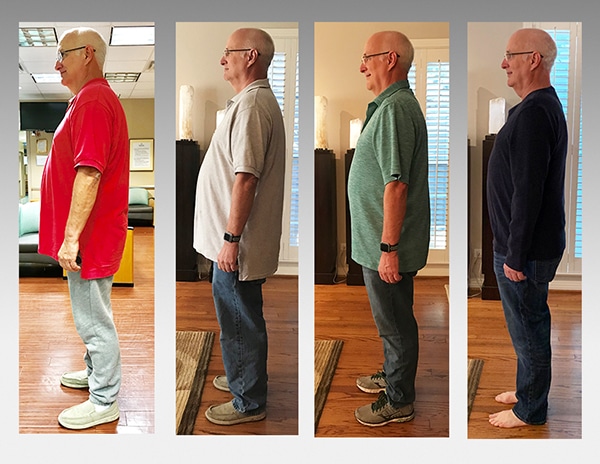Tracy Edwards lives the kind of hard-charging lifestyle that tends to not be very forgiving.
“I own two businesses and also sell real estate,” he says. “So, I’m on the go usually from 7 a.m. to about 9 p.m. every night.”
That type of schedule doesn’t allow much room for proper meal planning, and Tracy fell into a familiar trap.
“What’s the quickest way to eat? Let’s do fast food for breakfast, lunch, and dinner,” says Tracy, remembering his old thought patterns.
Junk food, chased by endless diet sodas, led to health problems.
“I was taking medication for type 2 diabetes, cholesterol, and for a couple of other health issues,” he says. “Then reality struck that I was doing so because I was fat.”
Another motivation hung over Tracy’s head.
“My dad passed away when he was 55 years old, so that age has always been the year I dreaded,” he says.
With his 55th birthday fast approaching, Tracy told himself it was time for a change.
Tuning in for answers
Around that time, Tracy saw a news story about a new, minimally invasive procedure to treat obesity being performed at Methodist Dallas Medical Center. The news story featured Prashant Kedia, MD, gastroenterologist on the medical staff at Methodist Dallas, and Sachin Kukreja, MD, bariatric surgeon on the hospital staff at Methodist Dallas. Together, the doctors performed the first endoscopic sleeve gastroplasty (ESG) in North Texas.
“The concept of the procedure is to mimic a laparoscopic sleeve surgery in which the volume of the stomach is significantly reduced,” Dr. Kedia says. “Instead of doing a surgery to cut away a large portion of the stomach, we use a tool that is passed through the mouth to suture the inside of stomach and reduce the volume by almost 60% to 70%. We change the shape of the stomach from a big, football-sized organ down to a skinny banana.”
After the 60- to 90-minute procedure in the endoscopy suite — as opposed to the operating room — patients wake up with no cuts, incisions or scars, and go home the same day. That is something that really appealed to Tracy.
 Tracy Edwards saw a transformation in his weight after having a minimally invasive weight-loss procedure at Methodist Dallas.
Tracy Edwards saw a transformation in his weight after having a minimally invasive weight-loss procedure at Methodist Dallas.
While many bariatric surgeries require a patient to have a body mass index (BMI) of 40 or more, alternative procedures, such as ESG, target people with a BMI of 30 to 40, which, for the average patient, means being about 50 pounds overweight.
Staying power
Dr. Kedia says most patients can expect to lose 15% to 20% of their original total body weight within the first year, which has been the case for Tracy.
“Methodist Dallas provided a dietitian to help me understand how to eat better and what to eat,” Tracy says.
A year later, he’s still getting the support he needs.
Endoscopic sleeve gastroplasty is a procedure in which a surgeon sutures the inside of stomach and reduces the volume by 60% to 70%.
Losing that weight, Dr. Kedia points out, can also reduce the risk of cardiovascular disease, hypertension, diabetes, and even fatty liver disease.
Just in time for that big birthday he once dreaded, Tracy says he’s taken control of his life, thanks in large part to the ESG procedure.
“I told Dr. Kedia, ‘I don’t know why everyone doesn’t do this. It’s the simplest, easiest thing in the world,’” Tracy says. “It’s been a great journey for me.”
Get Shine Online delivered to your inbox!

